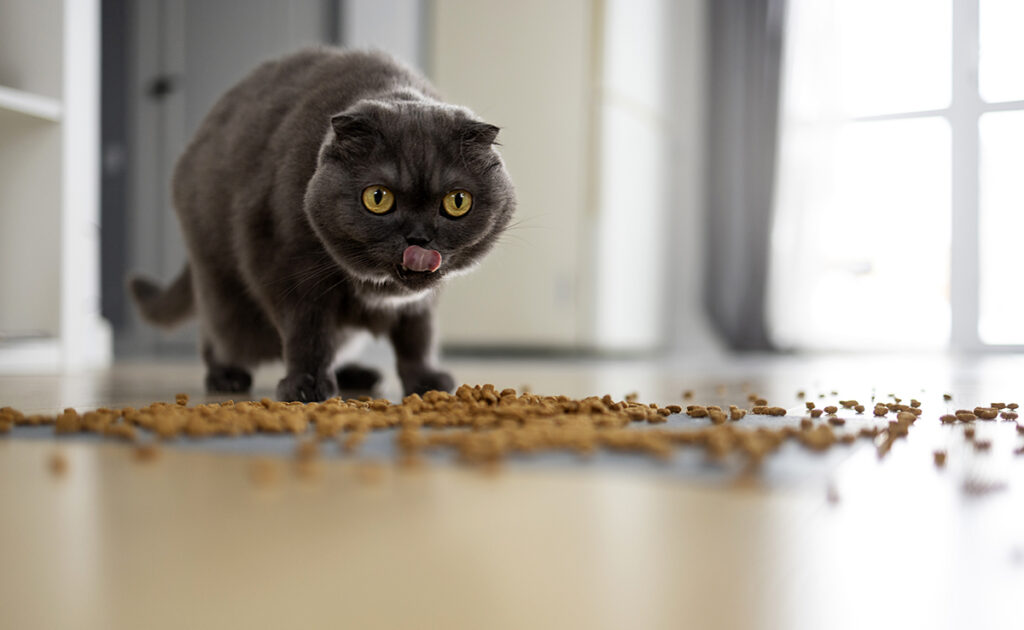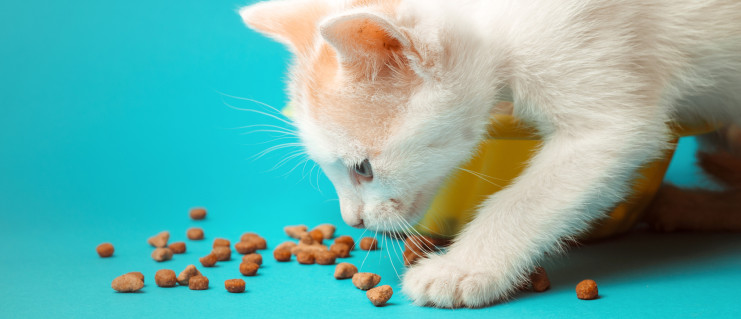
For the feline who doesn't go out and even for the cat who spends his nights wandering up and down the hills, making his meal fun brings many advantages. The bowl that magically fills every day brings a certain comfort to your four-legged companion, but does not meet the many needs of your little predator.
For the cat, eating is above all hunting and making use of its agility, its intelligence and making its elegant muscles work. Food stimulation meets all of these needs and, moreover, prevents the feline who never leaves from boredom, the source of stress and undesirable behavior. Satisfy your cat's hunting instincts with these 5 ideas that will make their meal just as fun as it is delicious.
Use store-bought products so he can earn his meal
The goal is obviously not to starve your “velvet paws”, but to divide its daily ration into several meals and games. Unless your feline is very lazy by nature, this new feeding method should satisfy its predatory instinct, exercise its muscles and reduce stress in the gluttonous cat.
1 – The anti-gluttonous bowl
Originally proposed for cats who eat faster than their shadow, anti-gluttonous bowls force the animal to think, work with the front paw and eat more slowly. Ideal for cats who suffer from obesity or who eat too quickly to the point of vomiting, they also have the advantage of keeping the cat occupied and reducing their stress in the face of boredom. In the form of a maze, designed so that only your cat's paw passes, you will find them in different models and difficulties. These activity trays or fun dispensers can advantageously replace your cat's usual bowl. Tunnels, mazes, plateaus, it is in your best interest to invest in several of them to vary the difficulty and keep your cat's hunting instinct alive.
2 – Fun boards or activity platforms
To eat, your cat will have to use its brains! For the moment, this fun way to feed your little companion is mainly intended for dogs. Trapdoors, levers, drawers, these cognitive exercises are a little more complicated to carry out for our feline friends. You will therefore need to help them master the exercise or adapt them so that your kitty does not find itself in difficulty. Turn to the most recent models which allow the cat equipped with an electronic chip to trigger each trap depending on its position in front of the toy. Ball, reservoir or pusher, each one makes the cat think:
- The cat learns to push the ball to release the kibble;
- Reservoir dispensers encourage them to move the elements of their paw to reach the food;
- More difficult, the push dispenser requires the animal to press the mechanism to obtain its ration.
Did you know ?
Some fun dispensers are intended for little gourmets who prefer pâtés and tasty bites.
If your cat is having difficulty succeeding, help him by showing him how to obtain treats or meals. By observing you for several days in a row, he will eventually understand how it works. Leave a normal bowl available so that he does not feel frustrated and feeds properly throughout the day and night.
3 – The dispensing ball
The hollow ball filled with kibble or treats is also very popular with our little hunters. As soon as he pushes or plays with the ball, it releases kibble. Enough to motivate him to move or to eat! They are perfect for stimulating a bored cat and encouraging them to work their muscles. The game also reduces the anxiety that your feline may feel and prevents digestive problems or excess weight by slowing down its food consumption.
Playing with food to motivate your cat?
There is no need to invest in commercial games to make your cat's meals fun. All it takes is a little time and imagination for the meal to become a moment of sharing that your cat will love. Don't worry, you won't have to eat his kibble.
4 – Hide and seek kibble
Easy to set up and inexpensive, kibble hunting is always a great success among our small predators. The simplicity of hide-and-seek, however, remains very effective in working on the problem solving, curiosity and physical activity of the feline. So that this activity retains its flavor, offer different hiding places and in different places in the house or in the garden. Under furniture, on shelves, in corners, you are spoiled for choice to exercise your little companion's sense of smell and muscles.
5 – Simple games to work on the cat's awareness and activity
Sometimes the simplest solutions are much more effective in feeding your cat in a fun way. Blow on the kibble through a straw, slide the treat along a surface for him to chase or build an obstacle course full of rewards. For this last tip, start by building a single obstacle with a tunnel or a cardboard box. Place the food at the end, he will quickly find a way to get it. Repeat several times, then make the course more complex as you go.
Make your own games for a fun meal
Whether you're a handyman or gifted with your hands, you can make fun games that will be used to feed your cat. Plastic bottle, cardboard, rolls of toilet paper and paper towels, a scissor, tape or glue and one or more ideas will take shape to make your feline's meals fun. From surprise boxes to dispensers that roll or stay fixed to the ground or up high, you will find a thousand and one ways on the Web to make your meals fun. If you are good at sewing, make a search mat or snuffle-mat. Usually offered to dogs, this mat where treats or kibble are hidden will awaken the cat's search and hunting instincts as if it were foraging in tall grass.
The rules of the art so that the cat really benefits from fun games for its meals
If your cat has been eating from a simple bowl for years, making mealtime fun may seem a little more complicated to set up. Your cat may even look at you with a bad eye and turn his back on your super fun bowl.
- Leave his usual bowl available so that he can eat if he doesn't understand how the game works. Even if the cat can go without meals for several days, the stress of an empty bowl remains real for our little anchored companions in their habits.
- Gradually increase the difficulty of each game so as not to frustrate and stress your little companion.
- As soon as he masters several of the methods or toys used to make his meal fun, alternate them to counter boredom.
- At the beginning, offer the foods he prefers to motivate him, then alternate between kibble and treats to avoid weight gain.
- Whatever games and toys you use, carefully calculate your daily food intake.
- Make sure your cat has enough to eat throughout the day and night and have several bowls of fresh water available so your cat can stay properly hydrated.
These activity trays, mazes or balls are not only used to feed the animal. An alternative to unlimited feeding, they enrich their environment and offer your little companions the physical and cognitive stimulation necessary for their balance. Responding to his predatory and nibbling instincts helps keep your little companion away from stress, boredom and obesity. If you share the lives of several felines, this fun method can also ease the tensions that cause fights and aggression at mealtime.
Have you tried the fun meal for your cat? Tell us all in the comments.




